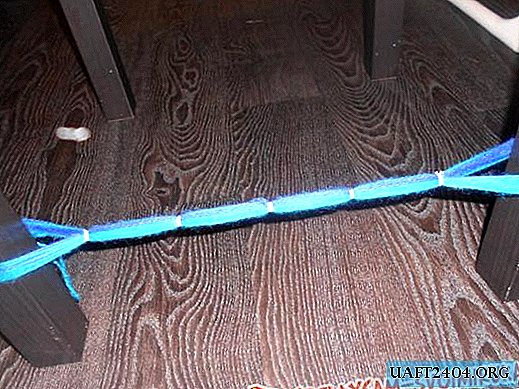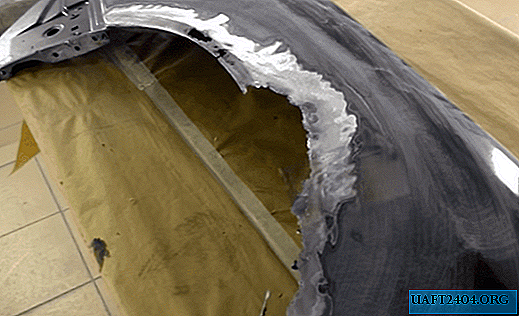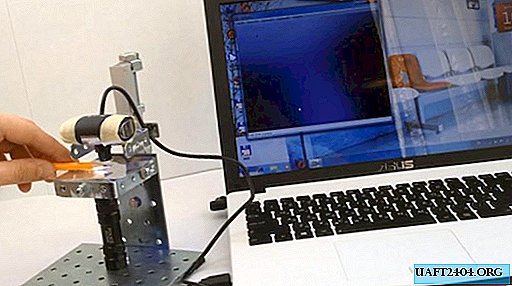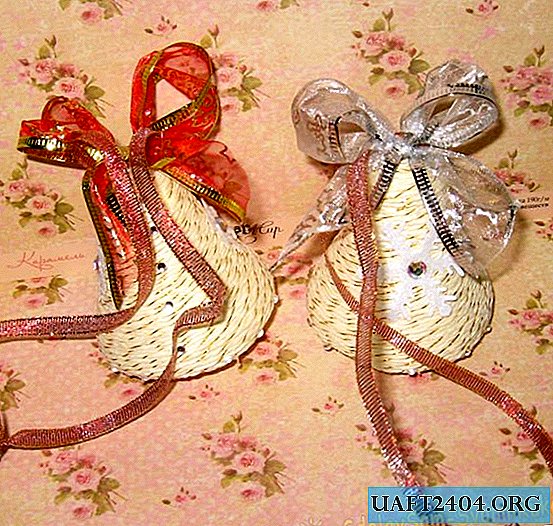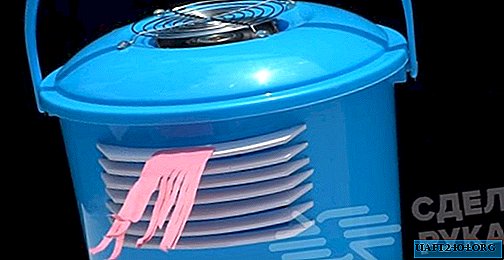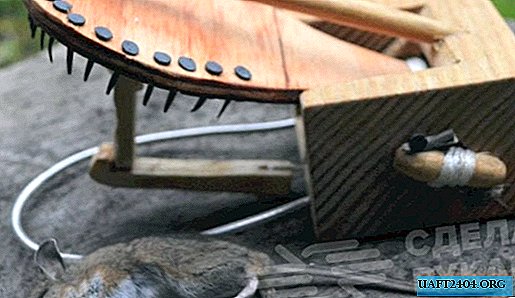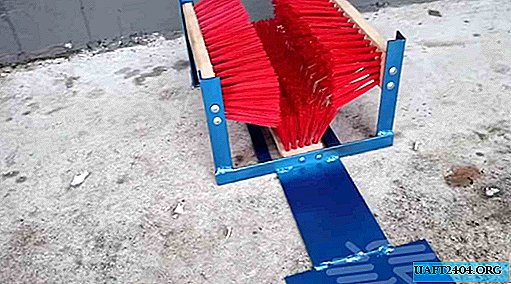Share
Pin
Tweet
Send
Share
Send
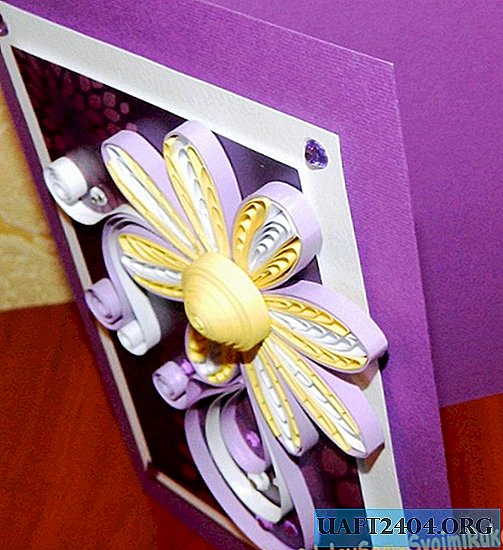
To complete the work, you will need to prepare the list of materials presented below. Some materials can be replaced at your discretion and just as you can take the idea from this work and make your own unique card, which will be an exclusive product.
List of materials for making cards:
- A4 sheet of pastel paper or cardboard;
- White cardboard or thick paper;
- Designer paper purple with a pattern;
- Double-sided foam tape;
- Quilling paper - yellow, pale violet, white;
- Rhinestones are white and purple of various sizes;
- Scallop tool
- Quilling tool, scissors, glue, tweezers.
We make the basis of purple cardboard, bending the A4 sheet in half. The bend line should be drawn with a sharp object so that the cardboard is easily and as evenly bent as possible.
From a white cardboard we cut out a piece 12x17 cm, on the reverse side we glue squares of foam tape.

We fix white cardboard on the base.

We take designer paper. It is desirable that it be also dense enough, since a voluminous flower will be attached to it.

Dimensions of purple designer paper 10x15 cm. It is also glued on the reverse side with double-sided foam tape and fastened on top to a white rectangle on the base.


We take the yellow paper for quilling 20 cm and with the help of the "comb" tool we begin to form the part. We fasten the end of the strip of paper on the scallop.

Next, we make loops, each time increasing the size of the element being executed.



At the point of contact of the paper loops, they should be lubricated with a little glue so that the element does not disintegrate, but holds firmly.
It turns out such a detail. They will need to make 16 pieces.

From white paper of 20 cm in white we carry out the same eight elements.
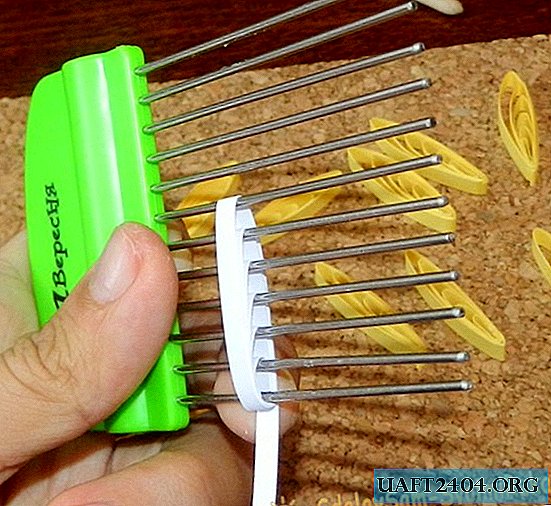
We connect two yellow and one white parts with glue so that the white one is in the middle.

Now we take a gentle purple strip of paper 20 cm long and wrap these three parts with it.

Cut the edge and fix it with glue. The first petal is ready.

We make such 8 petals for our flower.

Take the yellow quilling paper and form a tight roll. The length of the strip should be about 100 cm, depending on the density of the paper. The diameter of the roll should be about 2.5 mm.

Now, gently squeeze the finished roll inward so that a three-dimensional part is obtained.

From the inside, the part must be well lubricated with glue so that it retains its shape.

We fix the flower petals with each other with glue at the points of contact. In the center we fix the middle of the flower, which should completely dry.

The flower is voluminous.

We smear the finished flower on the back with glue, and then fix it on the basis of the postcard in the upper right.

From the violet and white quilling paper, we perform the following detail, making the loops one at a time: a small purple loop — a little more than a white loop — an even bigger purple loop. At the base, the ends of the part are fastened with glue.
We smear the part with glue, glue it to the base.

Next, take a strip of purple paper 20 cm in length, bend in half. The edges of the strip are fixed with glue, then we begin to wind the tool. Lubricate the resulting part with a small layer of glue, fix on the base.
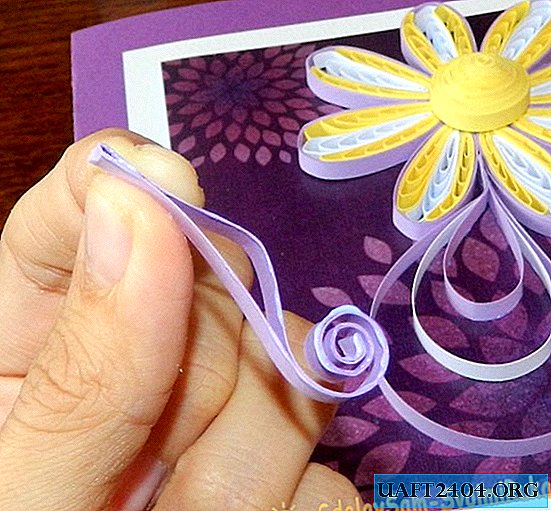
We take a small strip of white quilling paper, we twist the tool on one side. We also attach the finished element to glue on the base. We make one more same detail.

The number of parts and their location can be done at your discretion.

Using tweezers, attach the rhinestones to the card.

Here you can also rely on your imagination and place rhinestones to your taste.

A very original and unusual do-it-yourself postcard using the quilling technique is ready!



Share
Pin
Tweet
Send
Share
Send

